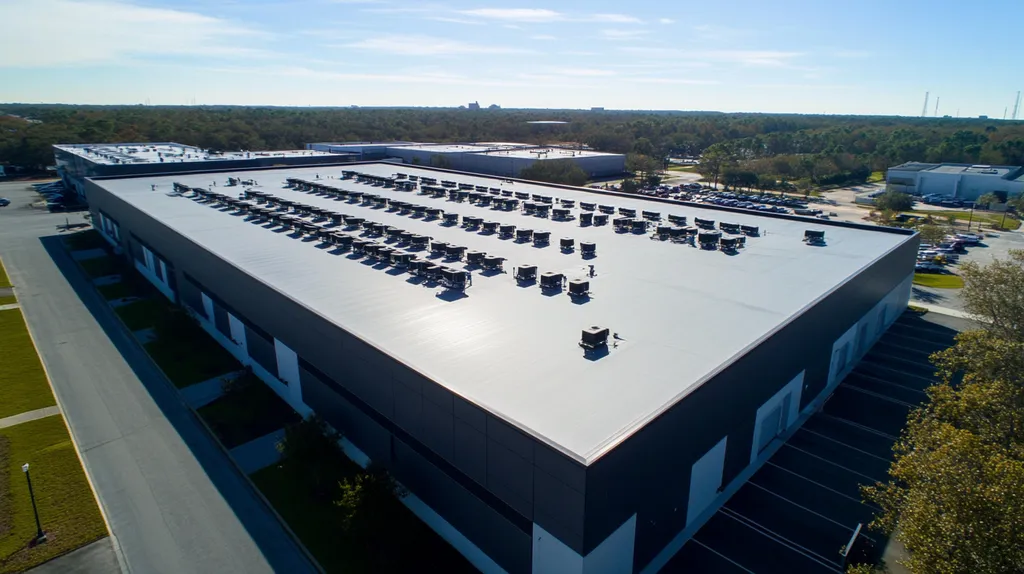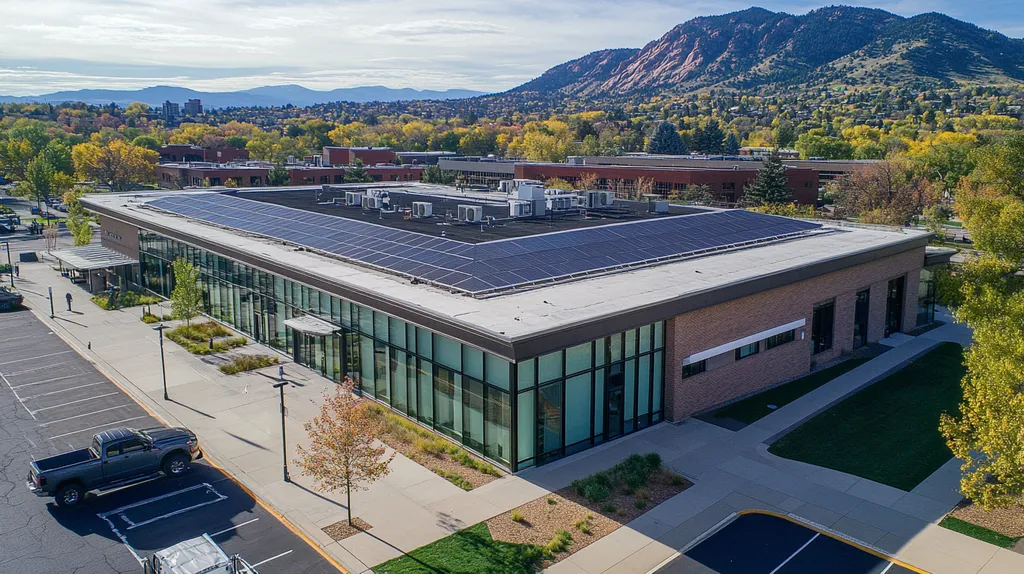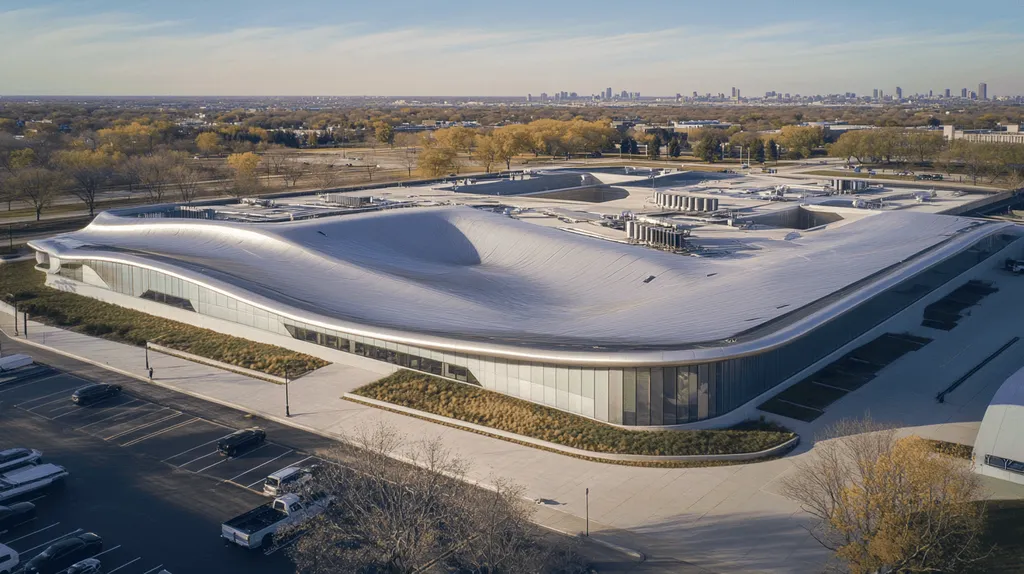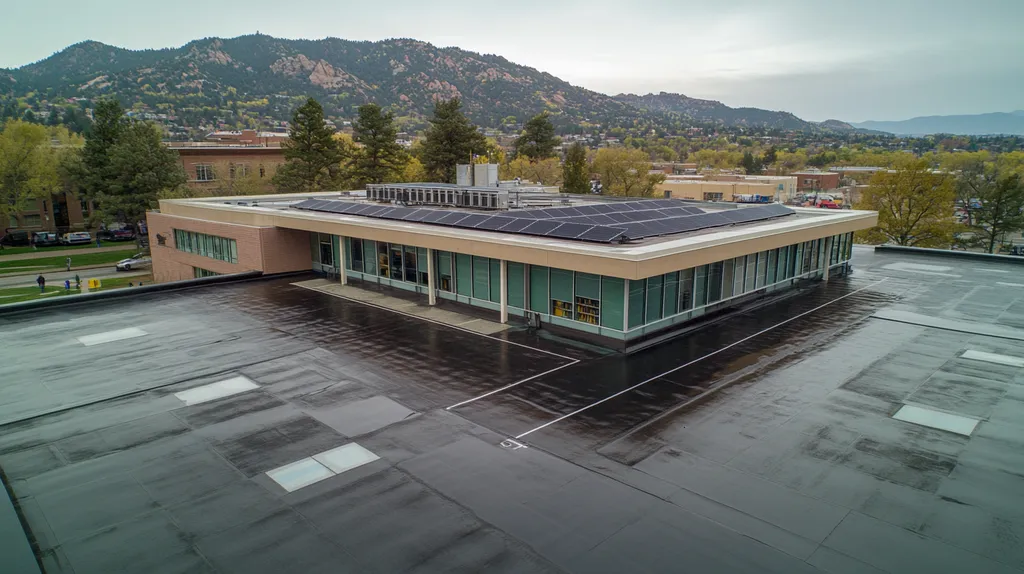In an era where a single roof failure can cost industrial facilities millions in damages and downtime, traditional inspection methods are becoming dangerously obsolete. Studies show that 40% of industrial roof problems go undetected until significant damage occurs.
Enter the new wave of assessment technologies: drones equipped with thermal cameras, AI-powered moisture detection, and smart sensors that transform roof monitoring from guesswork into a science. Yet many facility managers remain overwhelmed by the dizzying array of options.
This guide cuts through the tech-speak and marketing hype to deliver a practical roadmap for understanding and implementing modern roof assessment solutions that protect your facility’s most critical asset.
SECTION 1: THE BASICS EXPLAINED
In the dynamic world of industrial operations, understanding the condition of your roof isn’t just a good idea—it’s essential. Alarmingly, about 30% of commercial roofs fail prematurely due to neglect or poor assessments. By adopting effective roof evaluation techniques, facility managers can nip costly leaks and extensive damage in the bud. Thanks to new technologies, roof assessments are becoming faster and more precise, paving the way for smarter decisions. This section delves into what these innovative tools are, why they should matter to building owners, and how they seamlessly integrate into everyday maintenance routines.
What It Is (In Plain Language)
Today’s roof assessment technology employs cutting-edge methods to scrutinize the state of industrial roofs. Think drones buzzing overhead, thermal imaging cameras picking up temperature variations, and moisture detection sensors probing the depths of your roofing system. Drones carry out aerial inspections, offering a detailed perspective without the hassle of scaffolding or ladders, while thermal cameras reveal hidden leaks that would otherwise go unnoticed.
Moisture sensors work like tiny detectives, sniffing out wet spots that signal trouble. Together, these technologies provide valuable insights, equipping property managers with the knowledge needed to make proactive decisions. This leap from old-school inspections to high-tech evaluations not only boosts accuracy but also speeds up the process, helping to identify potential issues before they snowball.
Equipping facility managers with this knowledge empowers them to act decisively, protecting their valuable investments against costly mishaps.
Why It Matters (To Your Building)
Roof assessments are not just a box to check; they are essential for maintaining a facility’s structural integrity. A compromised roof can unleash a cascade of problems, from significant structural damage to potential safety risks. By embracing advanced assessment technologies, property owners can prioritize the health and longevity of their roofs.
Ignoring regular roof inspections can be a costly mistake, leading to unplanned downtime that wreaks havoc on productivity and revenue. Adopting a proactive maintenance strategy facilitates timely repairs and regular upkeep, significantly lowering the risk of panic-induced emergency fixes.
Moreover, consistent assessments contribute to a longer lifespan for roofing systems. Investing in advanced tools not only keeps maintenance costs in check but also ensures compliance with safety regulations.
In the end, a well-maintained roof equates to peace of mind, enhanced property value, and a solid return on investment.
How It Works
The journey of embracing new roof assessment technologies kicks off with a well-crafted inspection plan. Facility managers collaborate with roofing specialists to pinpoint specific needs and timelines. With a green light, drones take to the skies, capturing high-resolution images and videos that provide a detailed overview of the roof.
Next comes the thermal imaging technology, which serves as a high-tech gateway to identifying temperature variations and potential moisture infiltration. A robust software system analyzes the data collected, generating comprehensive reports that highlight any red flags.
These results are shared with property managers, often accompanied by clear recommendations for repairs or maintenance. This collaborative approach ensures that findings drive action and align with overall building management strategies.
Integrating these technologies into regular maintenance schedules allows property owners to continuously monitor their roofs, enhancing resilience against environmental challenges and wear and tear.
SECTION 2: PRACTICAL APPLICATIONS
In the high-stakes realm of industrial roofs, guesswork has no place. Thanks to cutting-edge roof assessment technologies, property owners can spot potential problems before they evolve into costly disasters. Tools like infrared thermography are pivotal, detecting moisture hiding inside roofing systems and enabling proactive maintenance. By leveraging these technologies, facility managers can safeguard long-term roof integrity and safety while minimizing financial impacts.
Common Uses & Examples
Roof assessment technologies play a vital role in the industrial sector, making damage detection more reliable than ever. Infrared thermography is a game-changer, identifying thermal anomalies that point to hidden moisture, thus preventing severe water damage from leaks. Think of it as a superhero for your roof—detecting danger before it strikes.
Drones equipped with high-definition cameras are also revolutionizing visual inspections. These flying eyes provide stunning aerial views, uncovering damage that traditional ground assessments might miss, all while keeping humans safely on the ground.
Moreover, moisture mapping technologies are essential for pinpointing areas where water might be sneaking in. By analyzing the gathered data, facility managers can prioritize repairs effectively, ensuring resources are allocated where they’re most needed.
Overall, these innovative technologies not only boost safety but also extend the lifespan of roofing materials, allowing for timely maintenance that significantly reduces future costs.
When You Need It Most
There are moments when the clock is ticking, and roof assessments become urgent. After severe weather events—like torrential storms or damaging hail—immediate inspections are vital. These assessments can uncover hidden damages that might compromise the entire roofing system.
Additionally, before the changing seasons—whether bracing for winter’s freeze or summer’s heat—proactive evaluations can highlight vulnerabilities needing attention. Catching these issues early can prevent future troubles when climatic extremes threaten to make matters worse.
Furthermore, when planning significant facility changes, such as installing heavy machinery or expanding operations, evaluations ensure the existing structure can handle the extra load. By recognizing these crucial moments for assessment, property owners can avoid unnecessary financial strain and costly downtime.
Interactions With Other Systems
Roof integrity is tightly intertwined with other building systems. A well-maintained roof supports HVAC efficiency, ensuring proper insulation and preventing leaks that could disrupt airflow. This connection highlights that a strong roof isn’t merely an overglorified hat; it’s crucial for overall system performance.
Moreover, roofs equipped with reflective technologies can reduce heat absorption, leading to lower cooling costs. Regular assessments safeguard this performance by ensuring any deterioration is addressed swiftly, maintaining energy efficiency.
Integrating roof assessment data with building management systems can offer a treasure trove of actionable insights. This synergy creates a more cohesive approach to maintenance planning and operations, turning data into effective strategies.
By understanding how roofing systems link with other building components, facility managers can cultivate a more resilient and efficient environment, transforming their properties into models of integration and functionality.
SECTION 3: KEY TERMINOLOGY DECODED
In a world where the slightest roofing misstep can snowball into financial disaster, grasping the terminology around roof assessment technologies is non-negotiable. Misunderstandings can lead to costly errors in judgment and maintenance choices. This section strips away the jargon and explains key terms, industry lingo, and measurement units. With clarity in language, property owners and facility managers can confidently navigate the complexities of roof integrity technologies.
Essential Terms Explained
First up is “Infrared Thermography,” a mouthful that simply means using special cameras to spot moisture hidden beneath your roof’s surface. This non-invasive technique can reveal lurking problems, allowing for timely interventions and avoiding chaotic repairs down the line.
Next, let’s talk about “Drones.” These flying devices have kicked traditional roof inspections to the curb, offering bird’s-eye views that were previously hard to come by. With high-resolution cameras, drones capture detailed images of roofing conditions and help mitigate safety risks by keeping humans on the ground.
Another term worth noting is “Moisture Mapping.” This process creates a visual map showing moisture levels across your roof’s surface, making it easier to pinpoint areas in need of immediate attention. These tools and technologies are vital for more efficient, accurate industrial roof assessments.
Industry Jargon Translated
Industry jargon can be a minefield for the uninitiated. Take “Ponding,” which refers to pesky water pooling on the roof’s surface. If left unchecked, it can lead to significant structural damage, making it crucial for facility managers to know what to look for and when to act.
“Thermal Bridging” is another term many come across during assessments. It describes heat escaping through parts of a roof, signaling energy inefficiencies. Recognizing this concept can lead property owners to realize the importance of proper insulation in preventing energy waste.
Measurement & Units Simplified
Understanding the measurements and units is critical for effective roof evaluations. One common term is “Pound per Square Foot” (psf), which indicates the load a roof can safely support. This number is crucial when verifying if existing structures can handle new installations or changes.
“R-value” is another key metric representing insulation efficiency—the higher the R-value, the better the insulation. Knowing R-values plays a significant role in selecting the right materials for your roofing systems, ultimately impacting energy costs.
These terminology insights and measurements aren’t just academic; they form the backbone of effective roof maintenance, crucial for longevity and performance.
SECTION 4: DECISION FACTORS
In a world where one minor roofing issue can spiral into financial chaos, making the right decisions about roof assessment technologies is crucial. Property owners and facility managers face the double-edged sword of balancing costs against the potential for catastrophic failures. Each choice, whether about cost, performance, or durability, can mean the difference between a secure investment and a leaky nightmare. This section explores these vital decision factors to empower informed choices in the realm of roof assessment technologies.
Cost Considerations
Cost is the first hurdle in the quest for effective roof assessment technologies, and the range can be staggering. Traditional methods often drain budgets through labor and materials, while innovative technologies may require a steep initial outlay. Consider infrared thermography—this high-tech tool may hit hard on the wallet upfront, but it can save big bucks by spotting issues before they morph into full-blown disasters.
Don’t overlook the long-term savings tied to proactive maintenance. By investing in new technologies, facility managers could experience fewer surprise repairs and longer roof lifespan, a fact that compounds savings over time. Calculating both immediate expenses and future savings provides a clearer financial picture.
The elusive return on investment (ROI) must be scrutinized, too. Sure, a low initial cost might seem attractive, but if it doesn’t contribute to the roof’s durability or operational efficiency, it could be a false economy. A thorough evaluation of total ownership costs will reveal whether a technology is worth its price tag.
In the end, successful cost considerations hinge on balancing initial spending against the promise of reduced long-term expenses, ensuring roofs are not just near-term solutions but solid investments.
Performance Trade-offs
In the arena of roof assessment technologies, performance trade-offs are a top priority. Various tools and methods offer different levels of accuracy in diagnosing roof problems, which directly impacts how maintenance strategies unfold. Drones may zip through inspections and cover vast areas quickly, but they can miss the finer details necessary for comprehensive assessments.
Conversely, while traditional ground-based techniques might take longer, they have the dexterity to uncover nuances that aerial views miss. Deciding whether speed or precision is more valuable depends on the operational demands of the facility.
Be aware that deploying high-tech solutions often requires upskilling staff. Factor in training costs and the time needed for the team to adapt to new processes. Evaluating performance should consider all attributes that contribute to effective operation—a one-dimensional approach won’t cut it.
Ultimately, striking the right balance between speed, accuracy, and usability will determine how efficiently new roof assessment technologies are integrated into routine maintenance operations.
Lifespan & Durability Factors
The lifespan and durability of roofing systems are critical components in the adoption of assessment technologies. Many of today’s advanced tools focus on predicting maintenance needs before issues escalate, bolstering a roof’s longevity. For instance, moisture detection technologies can identify weak points, allowing for timely interventions that prolong a roof’s service life.
Different materials come with unique life expectancies. Knowing this can greatly impact technology choices since some modern assessment tools are tailored to tackle specific challenges associated with various roofing types.
The rise of predictive analytics in roof assessment is a game changer, offering insights into potential future issues and degradation patterns. With this foresight, facility managers can craft proactive maintenance strategies that enhance roof utility while reducing disruption.
Ultimately, prioritizing lifespan and durability in the evaluation process ensures the chosen assessment technologies set the foundation for a reliable, long-lasting roofing solution, protecting property investments from premature failures.
SECTION 5: COMMON CHALLENGES
Keeping an industrial roof in top shape is no walk in the park. With over 50% of industrial roof failures linked to shoddy maintenance and lackluster assessments, it’s clear that property owners face serious challenges. Unexpected leaks and structural damage can spring up seemingly overnight, wreaking havoc and costing a fortune. This section dives into frequent issues, warning signs that shouldn’t be ignored, and proactive strategies to prolong the life of your roof.
Frequent Problems & Solutions
Industrial roofs commonly battle leaks, blistering, and weakened seams. These headaches often arise from aging materials, relentless weather, and shoddy installation. While leaks can lead to significant water damage, resulting in disrupted operations and inventory losses, there are ways to tackle these issues head-on.
Utilizing regular inspections with cutting-edge technologies like thermal imaging helps catch problems before they escalate. Additionally, moisture meters can be lifesavers in monitoring water intrusion, giving property owners a heads-up before severe damage occurs. Implementing a proactive maintenance plan isn’t just a suggestion; it’s a necessity.
Investing in employee education about recognizing warning signs is equally crucial. Regular training empowers staff to take fast action, helping prevent minor roof issues from snowballing into costly repairs.
By fusing modern technology with a knowledgeable team, organizations can enhance their roof maintenance strategies, ultimately slashing long-term costs and hazards.
Warning Signs To Watch For
Catching warning signs early can mean the difference between a simple fix and a major overhaul. Indicators like sagging areas, pooling water, or excessive granule loss are red flags that should never be ignored. These symptoms can escalate quickly if not addressed promptly.
Look out for mold or mildew making an appearance inside the building—this is a sure sign your roofing system has leaks. Damaged flashing or visible cracks around seams also demand immediate attention. Ignoring these issues can lead to headaches you won’t soon forget.
On the exterior, overhanging trees can pose an unacknowledged threat. Branches dropping onto the roof can compromise structural integrity, so it’s crucial to maintain clearances and monitor for storm debris regularly.
Acting promptly on these warning signs can save property owners from hefty repair bills and ensure the roof remains in good health.
Preventative Approaches
Preventative maintenance is non-negotiable for extending the lifespan of industrial roofs. Regular inspections should be at the heart of any facilities management strategy, ideally scheduled twice a year in spring and fall.
Investing in advanced technologies like drone inspections and infrared thermography will make routine check-ups ultra-efficient. Drones can access hard-to-reach areas without putting anyone at risk—talk about a win-win!
Building a solid relationship with a reliable roofing contractor is equally beneficial. They can provide timely repairs and tailored maintenance plans based on specific roof conditions, ensuring nothing slips through the cracks.
Additionally, adopting a predictive maintenance approach leverages data trends from roof conditions to forecast future issues. This proactive strategy doesn’t just mitigate risks; it also helps with budgeting for repairs down the line.
SECTION 6: NEXT STEPS & RESOURCES
In the high-stakes game of maintaining roof integrity, property owners and facility managers can’t afford to sit on the sidelines. The consequences of ignoring advances in roof assessment technologies can be catastrophic—think costly repairs and major operational disruptions. This section dives into the essential questions to ask service providers, essential industry standards to know, and valuable resources for further education, ensuring you’re equipped to make well-informed decisions about your roof.
Questions To Ask Providers
Engaging roofing service providers calls for some strategic questioning. Start by inquiring about the specific technologies they use to assess roof conditions. Are they employing state-of-the-art tools like thermal imaging or drones to detect leaks and material deterioration? If they’re still clinging to antiquated methods, it’s time to reconsider.
Delve into their experience by asking for past case studies or success stories. This will give you a clearer picture of their reliability and the thoroughness of their assessments. Understanding their approach is crucial for making informed choices that favor roof longevity.
Request details on how their findings translate into actionable maintenance strategies. A great assessment isn’t just paperwork; it should lead to tangible steps for keeping your roof in top shape.
Lastly, clarify follow-up protocols after an assessment. Knowing how frequently inspections are recommended can help you budget not just finances but also your time, keeping your roof plan on track.
Industry Standards & Guidelines
Understanding industry standards is vital for ensuring that your roof remains intact and functional. Start with the American Society for Testing and Materials (ASTM), which offers guidelines covering roofing materials and assessment practices. Familiarity with these benchmarks helps ensure your provider meets your expectations for a quality inspection.
The National Roof Contractors Association (NRCA) also provides essential best practices for roof management. Adhering to these standards promotes safety and guarantees compliance with broader regulatory frameworks that could impact your facility.
Being well-versed in these guidelines empowers property owners to advocate for thorough assessments and strengthens conversations with roofing contractors. It’s not just about checking boxes but ensuring assessments are aligned with solid protocols for consistency and excellence.
Don’t forget to keep tabs on any updates to these standards. The roofing industry is always evolving, and staying in the loop ensures your roof assessment strategy is as robust as possible.
Further Learning Simplified
If you’re keen on expanding your knowledge of roof assessment technologies, plenty of resources are at your fingertips. Online platforms like the Roofing Industry Alliance for Progress offer an array of training webinars and educational materials focusing on the latest innovations.
Moreover, don’t underestimate the power of industry publications and journals. Subscribing to periodicals that feature articles on emerging trends will keep you updated on the latest advancements and technologies.
Engagement with peers through industry forums or local chapters of professional organizations can also offer valuable insights. Sharing experiences with others facing similar roofing challenges fosters understanding and opens doors to collaborative solutions.
In short, the more informed property owners and facility managers are about roof assessment technologies, the better positioned they are to protect their investments and ensure smooth operations.
The Bottom Line
With 40% of industrial roof failures now linked to outdated assessment methods, the stakes for adopting modern inspection technologies have never been higher.
While drones, thermal imaging, and AI-powered sensors represent quantum leaps in roof evaluation capabilities, they’re only as effective as the strategies deploying them.
Property owners who embrace these innovations, while maintaining healthy skepticism toward overblown marketing claims, position themselves to detect problems earlier and extend roof lifespans significantly.
The future of industrial roof integrity clearly lies in these emerging technologies – not because they’re trendy, but because they deliver measurable results in prevention, cost reduction, and risk management.
The choice is clear: evolve assessment practices now, or pay the price in catastrophic failures later.
FREQUENTLY ASKED QUESTIONS
Q. What is commercial roof assessment technology?
A. It’s a mix of advanced tools like drones and thermal cameras used for roof inspections. These let facility managers identify issues without the hassle of ladders. It’s a smart move that helps save money in the long run by nipping problems before they spiral out of control.
Q. When do I need industrial roof assessments?
A. Assessments should be prioritized after severe weather events or before seasonal changes. These evaluations catch potential vulnerabilities early on, before they lead to costly repairs. Additionally, whenever heavy machinery is installed, a check ensures your roof can handle the stress without cracking under pressure.
Q. What are common issues with commercial roofs?
A. Common pitfalls include leaks, blistering, and weak seams, mainly due to poor upkeep. These can escalate quickly, costing big bucks and causing major disruptions. Regular inspections using modern tools can spot these issues before they lead to a chaotic mess.
Q. How can I ensure my industrial roof lasts?
A. Start with a proactive maintenance plan, scheduling regular inspections. Incorporate modern technologies for accurate damage detection, and educate your team about warning signs. The magic happens when you combine high-tech assessments with knowledgeable staff ready to tackle issues head-on.
Q. What key terms should I know for roof assessments?
A. Key terms include “Infrared Thermography” for moisture detection and “Moisture Mapping” for visualizing water intrusion. Familiarizing yourself with these concepts will boost your confidence in navigating assessments, ensuring you’re not just following along blindly while people throw jargon at you.
Q. What should I ask roofing service providers?
A. Start with questions about their assessment technologies and request past success stories. Be clear on how their findings will lead to action plans. Ensuring that they recommend follow-up inspections helps in maintaining a healthy roofing strategy that won’t put you in tough financial spots.
Q. How can emerging technologies improve roof assessments?
A. New technologies like drones and moisture sensors drastically improve accuracy and speed in assessments. This helps identify issues earlier and reduces downtime. Plus, the data collected can be used to craft more informed maintenance strategies, keeping your roof in check and preventing costly mishaps.











